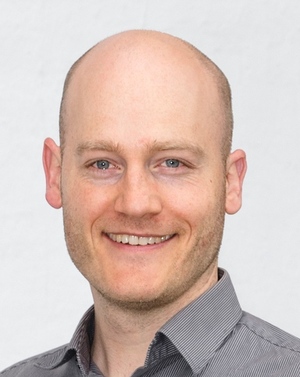Subwavelength Antenna Structures for Strong-Field THz Experiments in Condensed-Matter Systems
Hosted By: Photonic Metamaterials Technical Group
10 November 2021 14:00 - 15:00
Eastern Time (US & Canada) (UTC -05:00)Join the Photonic Metamaterials Technical Group for this webinar featuring Christoph Lange, Technical University of Dortmund, discussing the design, implementation and applications of broadband metal antenna resonator structures, which confine short THz and mid-infrared electromagnetic field transients to strongly subwavelength mode volumes, boosting the interaction of light with elementary electronic excitations of solid-state structures by orders of magnitude.
The webinar will present an overview of parameter-free numerical antenna design concepts based both on frequency-domain and time-domain methods. Subsequently, Prof. Lange will illustrate the versatility of this approach for strong-field experiments which employ single-cycle THz transients enhanced in specialized antenna structures to drive non-perturbatively nonlinear THz dynamics. Recent highlights include minimally dissipative THz spin switching in an antiferromagnet, carrier-wave Rabi flopping of intersubband transitions in semiconductor heterostructures, or subcycle nonlinearities of ultrastrong light-matter coupling.
Subject Matter Level: Intermediate - Assumes basic knowledge of the topic
What You Will Learn:
- Designing antenna near fields on subwavelength and subcycle scales
- Exploring THz strong-field nonlinearities by antenna structures
Who Should Attend:
- Students and researchers new to near-field antenna design
- Students and researchers interested in strong-field physics
About the Presenter: Christoph Lange, Technical University of Dortmund
 Christoph Lange is currently a Full Professor at the Technical University of Dortmund, Germany and researches quantum phenomena in solid state materials that happen on femtosecond timescales. His team makes use of switchable subwavelength resonators to boost and control linear and nonlinear interactions of light with matter excitations, thereby underlining the importance of metamaterials and nanoscale resonance engineering for fundamental studies.
Christoph Lange is currently a Full Professor at the Technical University of Dortmund, Germany and researches quantum phenomena in solid state materials that happen on femtosecond timescales. His team makes use of switchable subwavelength resonators to boost and control linear and nonlinear interactions of light with matter excitations, thereby underlining the importance of metamaterials and nanoscale resonance engineering for fundamental studies.
